News
Late to the Party: Wes Craven’s ‘New Nightmare’ (1994)
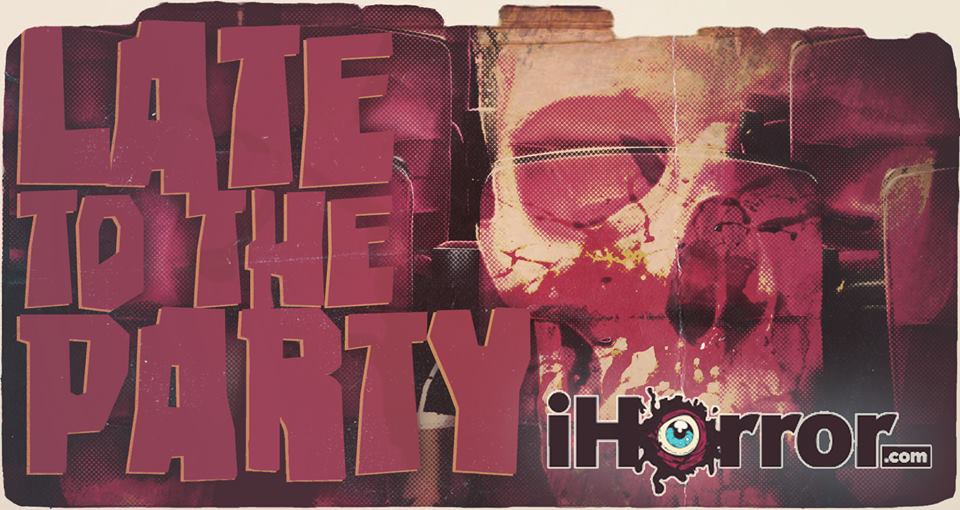

Via Mondo Tees
“Miss me?”
I’m glad I waited this long to finally watch Wes Craven’s New Nightmare. Listening to movie podcasts (specifically those that focus on horror) for the last few years has helped me approach cinema with an analytical edge that I never had before.
I wouldn’t have been able to comprehend a meta-horror film such as this or others, like the Scream franchise (also directed by Craven) or The Cabin in the Woods by Drew Goddard properly.
I had to watch this movie four times within the last month just to be able to process the heavy material.
At least with Scream and others, the characters are aware of horror films as well as the rules or cliches that define them. But, they’re unaware of the fact that their reality is governed by these rules (except for Randy) or that these rules can be twisted and even broken.
In New Nightmare, the characters are the actors (playing themselves) so not only do they have access to the horror genre and the rules–but the rules and the tropes that are unique or specific for their own franchise (A Nightmare on Elm Street) in a world that is basically our own, albeit a little more movie manufactured.
This knowledge grants the characters potential foresight, while in turn dismantling whatever conventions or expectations the audience may have.
It’s essentially Inception, a movie–within a movie
That being said, Scream is arguably the quintessential meta-horror series in cinematic history.
A series that not only: revamped the slasher genre for a new generation and for many generations to come–bringing the sub-genre out of obscurity and into the mainstream (much like Halloween did in 1978), and unwittingly created a horror movement that would carry through the 90’s and well into the millennium.
Strangely enough, New Nightmare predates Scream by two years, but no one ever talks about it or the radical ambition behind this unique feature and the monumental impact it had on the genre.
It stands alone in terms of its concepts and execution. Craven essentially treated this feature as a blank canvas for this experimentation in film making, witnessing firsthand what works and what doesn’t in terms of metafiction.
As a result, by the time Scream came along, Craven and Kevin Williamson were able to nearly perfect the idea.
Neither of these films are the first to go meta–that title probably belongs to Peeping Tom, which is also the first slasher I believe (it’s debatable).
But, without them we wouldn’t have any of the self-aware brilliance that has come along since they first terrorized our feeble minds on the big screen.

Via Metro
The Story for Wes Craven’s New Nightmare
“Reality and fantasy meet in unsettling ways in this installment of the long-running horror series, which finds director Wes Craven and actors Heather Langenkamp and Robert Englund all portraying themselves. As Heather (Heather Langenkamp) considers making another film with Craven, her son, Dylan (Miko Hughes), falls under the spell of the iconic disfigured villain Freddy Krueger (Robert Englund). Eventually, Langenkamp must confront Freddy’s demonic spirit to save the soul of Dylan.”
The Review
New Nightmare is a great film and truly unique, but it’s not perfect by any stretch. Craven appeared to write himself into a corner with his extensive and ambitious concepts.
I had a difficult time discerning Freddy’s abilities in the real world. He could obviously effect his victims in the same way in which he did in previous films (if you die in your dreams, you die for real).
He could also appear when the characters were awake, like in the scene where he comes out of Heather’s closet (an awesome sequence) and slashes her arm.
But he retreats when an earthquake begins to shake the house–this earthquake however, turns out to be isolated to Heather’s house. Where did he go? Does Freddy have limited amount of time while in the real world? It’s safe to assume that he wasn’t frightened by the quake.
Shortly after that scene, her son Dylan is given a shot from a nurse to “help” him sleep. Despite his babysitter Julie’s best efforts to keep him awake, he dozes off for a second and Freddy is able to manifest and brutally murder her.
But, nobody can see him, as if all of this is taking place within a dream (a dream that Julie would have to be in) for this to make sense.
Following Julie’s death, Heather claims that Dylan sleepwalks and can easily leave the hospital on his own accord. Does this mean that as long as he (or any of them) are asleep, Freddy can treat the entire world as his playground with unlimited power?
As brilliant and mind bending as these scenes are, they leave much to be desired in terms of explanation and reason.

Via Screen Slate
Elm Street Continuity
This is something that I have noticed throughout the Nightmare franchise: directors or screenwriters have a difficult time keeping up with continuity and establishing concrete rules for the dreamworld as well as “reality” and the complex relationship between the two.
I believe the logistics get tossed aside in favor of keeping profound or groundbreaking scenes and effects, or they just simply get lost in the shuffle.
It’s a bit of a catch-22. If hard science was applied, we may not have these iconic scenes from the franchise: Tina getting dragged up the wall and gutted, Freddy’s glove breaking the bathtub water, etc., but they lose a bit of credibility and points with critics due to their lack of continuity or coherence.
To be fair to critics, the glove should have vanished instantly when Nancy woke up instead of retreating below the depths from whence it came.

Via Filmgrab
Noteworthy Moments
I greatly appreciated Craven’s thought to include a scene with Robert Englund in Freddy’s classic makeup and attire, so that when the real Freddy shows up we can visually discern the major differences between the two different iterations.
The new and improved Freddy is bulkier, with clean and sleek clothing–including a black trench coat, black military boots, and leather pants.
His makeup is significantly different, resembling an anatomy dummy of a human’s muscular structure, his glove has become a part of him and includes a fifth bladed appendage.
I adore his new look, he is very intimidating. Its a shame that the rest of the franchise doesn’t include this variant–maybe in a future remake, reboot, re-imagining or what have you.
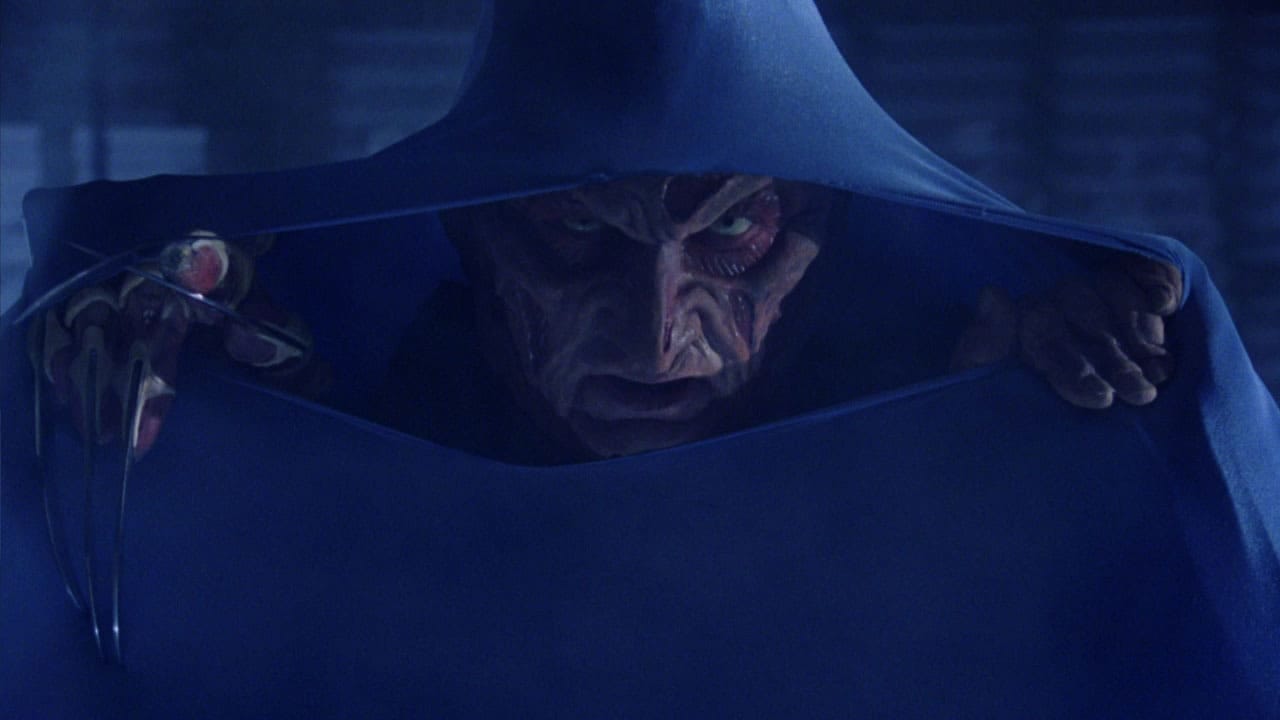
Via Stillcrew
The cameos were a nice touch: Bob Shaye, Wes Craven, Lin Shaye, Robert Englund. They helped ground the audience into the reality.
But they were undermined or undercut by some pretty poor performances and some super cheesy and on-the-nose dialogue.
The ending setting was brilliant, Heather accepts that she is going to play Nancy one last time (the new nightmare film) Freddy’s dream lair was like hell.
A bleak and smoldering cathedral of nihilism, very aesthetically pleasing.
Although I did appreciate the setting, the way that Freddy “dies” is super confusing and I think pretty lazy.
One of the recurring rules throughout this franchise is that Freddy cannot be harmed while in the dreamworld, but in New Nightmare, he gets stabbed and carries a limp, and burns to death (again) in his own world. It just seemed rushed, and pretty unsatisfying.

Via Horror Geek Life
This movie is definitely worth the watch. It’s criminally underrated as an Elm Street film, a horror film, and as metafiction.
It used to be on Netflix for the longest time, but now you may have to rent it at places like Amazon for three bucks–it’s worth the cost.
'Civil War' Review: Is It Worth Watching?
Follow our new YouTube channel "Mysteries and Movies" here.

Lists
Thrills and Chills: Ranking ‘Radio Silence’ Films from Bloody Brilliant to Just Bloody
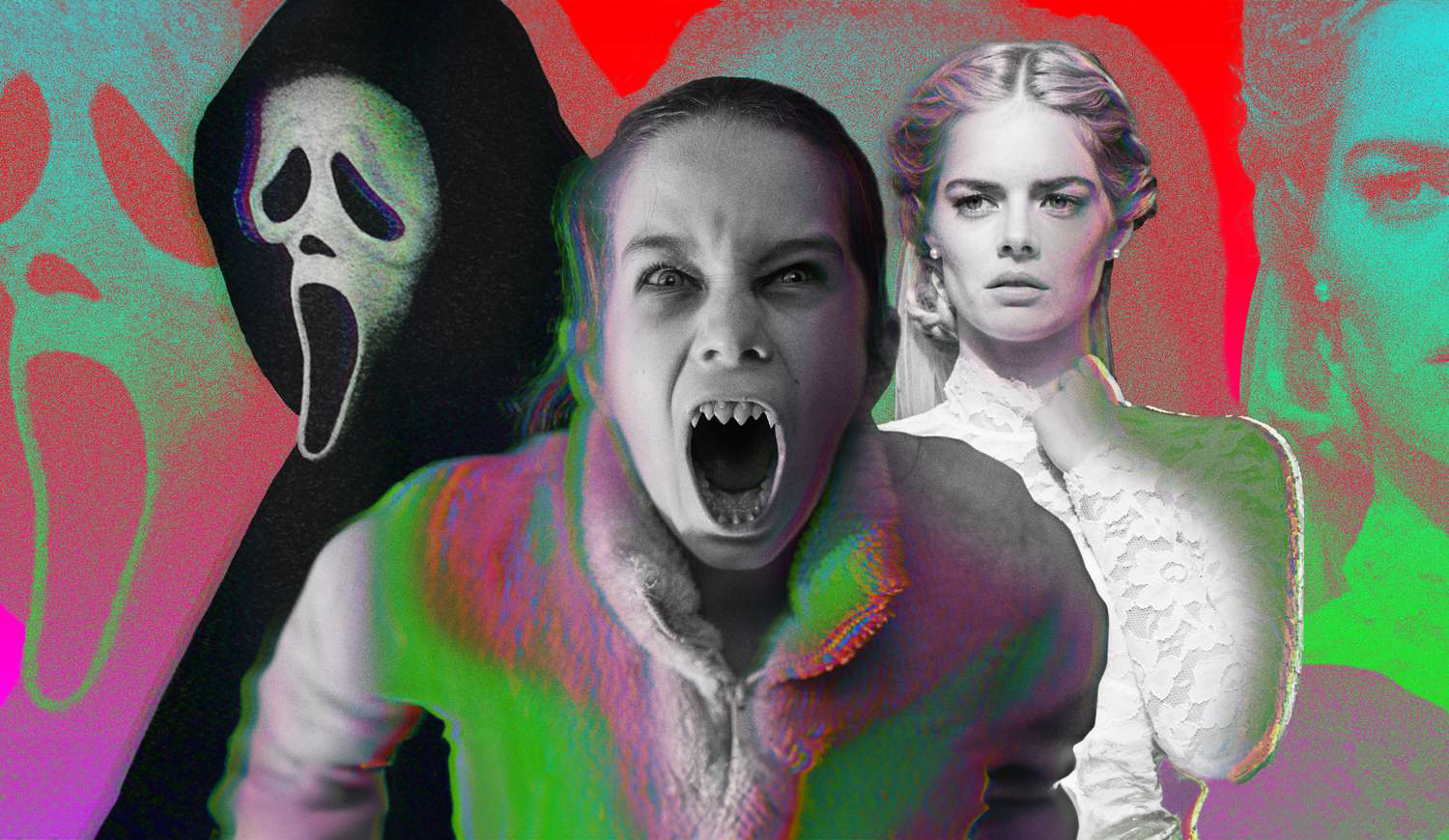
Matt Bettinelli-Olpin, Tyler Gillett, and Chad Villella are all filmmakers under the collective label called Radio Silence. Bettinelli-Olpin and Gillett are the primary directors under that moniker while Villella produces.
They have gained popularity over the past 13 years and their films have become known as having a certain Radio Silence “signature.” They are bloody, usually contain monsters, and have breakneck action sequences. Their recent film Abigail exemplifies that signature and is perhaps their best film yet. They are currently working on a reboot of John Carpenter’s Escape From New York.
We thought we would go through the list of projects they have directed and rank them from high to low. None of the movies and shorts on this list are bad, they all have their merits. These rankings from top to bottom are just ones we felt showcased their talents the best.
We didn’t include movies they produced but didn’t direct.
#1. Abigail
An update to the second film on this list, Abagail is the natural progression of Radio Silence’s love of lockdown horror. It follows in pretty much the same footsteps of Ready or Not, but manages to go one better — make it about vampires.
#2. Ready or Not
This film put Radio Silence on the map. While not as successful at the box office as some of their other films, Ready or Not proved that the team could step outside their limited anthology space and create a fun, thrilling, and bloody adventure-length film.
#3. Scream (2022)
While Scream will always be a polarizing franchise, this prequel, sequel, reboot — however you want to label it showed just how much Radio Silence knew the source material. It wasn’t lazy or cash-grabby, just a good time with legendary characters we love and new ones who grew on us.
#4 Southbound (The Way Out)
Radio Silence tosses their found footage modus operandi for this anthology film. Responsible for the bookend stories, they create a terrifying world in their segment titled The Way Out, which involves strange floating beings and some sort of time loop. It’s kind of the first time we see their work without a shaky cam. If we were to rank this entire film, it would remain at this position on the list.
#5. V/H/S (10/31/98)
The film that started it all for Radio Silence. Or should we say the segment that started it all. Even though this isn’t feature-length what they managed to do with the time they had was very good. Their chapter was titled 10/31/98, a found-footage short involving a group of friends who crash what they think is a staged exorcism only to learn not to assume things on Halloween night.
#6. Scream VI
Cranking up the action, moving to the big city and letting Ghostface use a shotgun, Scream VI turned the franchise on its head. Like their first one, this film played with canon and managed to win over a lot of fans in its direction, but alienated others for coloring too far outside the lines of Wes Craven’s beloved series. If any sequel was showing how the trope was going stale it was Scream VI, but it managed to squeeze some fresh blood out of this nearly three-decade mainstay.
#7. Devil’s Due
Fairly underrated, this, Radio Silence’s first feature-length film, is a sampler of things they took from V/H/S. It was filmed in an omnipresent found footage style, showcasing a form of possession, and features clueless men. Since this was their first bonafide major studio job it’s a wonderful touchstone to see how far they have come with their storytelling.
'Civil War' Review: Is It Worth Watching?
Follow our new YouTube channel "Mysteries and Movies" here.
News
Perhaps the Scariest, Most Disturbing Series of The Year

You may have never heard of Richard Gadd, but that will probably change after this month. His mini-series Baby Reindeer just hit Netflix and it’s a terrifying deep dive into abuse, addiction, and mental illness. What is even scarier is that it’s based on Gadd’s real-life hardships.
The crux of the story is about a man named Donny Dunn played by Gadd who wants to be a stand-up comedian, but it’s not working out so well thanks to stage fright stemming from his insecurity.
One day at his day job he meets a woman named Martha, played to unhinged perfection by Jessica Gunning, who is instantly charmed by Donny’s kindness and good looks. It doesn’t take long before she nicknames him “Baby Reindeer” and begins to relentlessly stalk him. But that is just the apex of Donny’s problems, he has his own incredibly disturbing issues.
This mini-series should come with a lot of triggers, so just be warned it is not for the faint of heart. The horrors here don’t come from blood and gore, but from physical and mental abuse that go beyond any physiological thriller you may have ever seen.
“It’s very emotionally true, obviously: I was severely stalked and severely abused,” Gadd said to People, explaining why he changed some aspects of the story. “But we wanted it to exist in the sphere of art, as well as protect the people it’s based on.”
The series has gained momentum thanks to positive word-of-mouth, and Gadd is getting used to the notoriety.
“It’s clearly struck a chord,” he told The Guardian. “I really did believe in it, but it’s taken off so quickly that I do feel a bit windswept.”
You can stream Baby Reindeer on Netflix right now.
If you or someone you know has been sexually assaulted, please contact the National Sexual Assault Hotline at 1-800-656-HOPE (4673) or go to rainn.org.
'Civil War' Review: Is It Worth Watching?
Follow our new YouTube channel "Mysteries and Movies" here.
Movies
The Original ‘Beetlejuice’ Sequel Had an Interesting Location
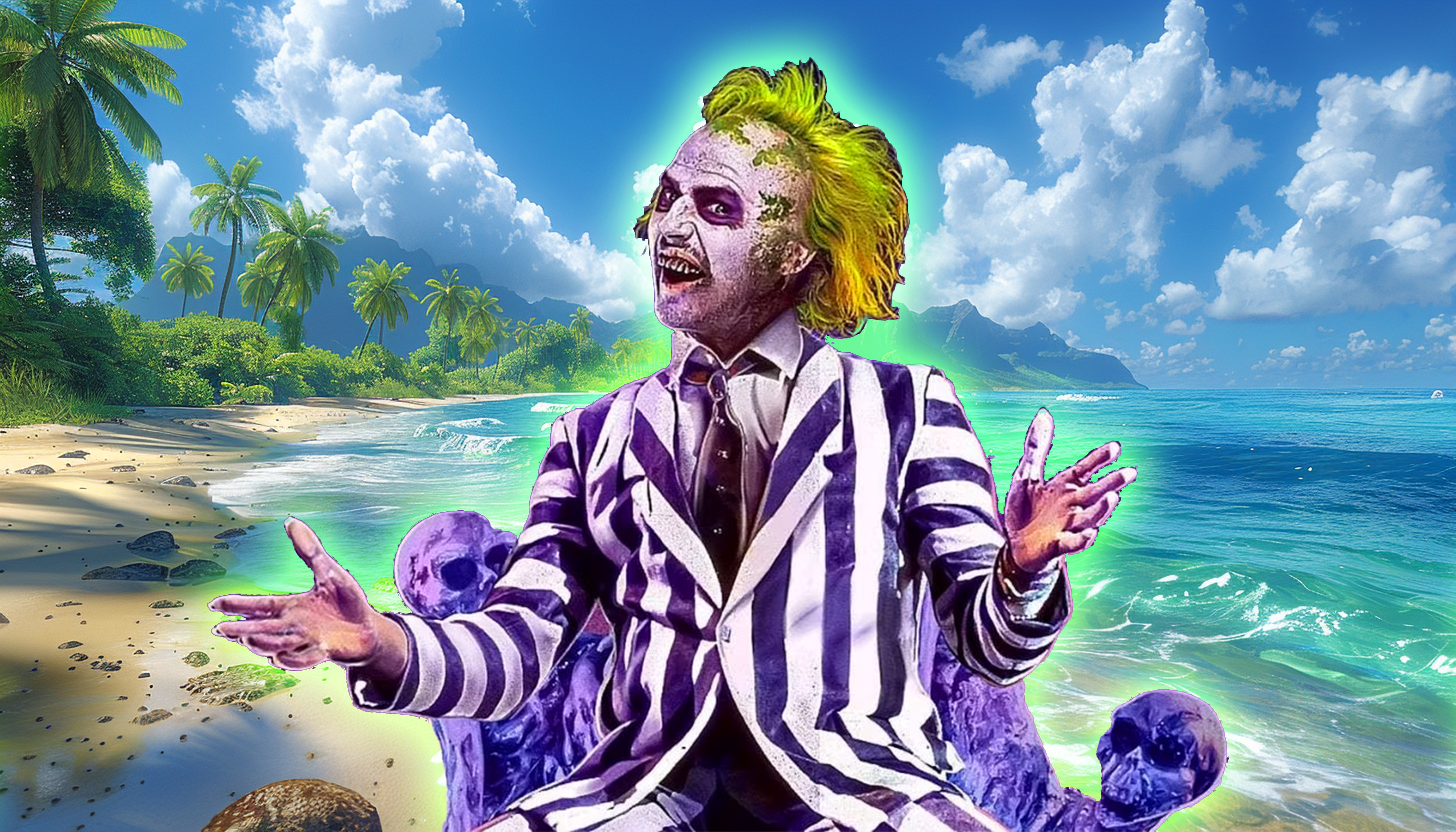
Back in the late ’80s and early ’90s sequels to hit movies weren’t as linear as they are today. It was more like “let’s re-do the situation but in a different location.” Remember Speed 2, or National Lampoon’s European Vacation? Even Aliens, as good as it is, follows a lot of the plot points of the original; people stuck on a ship, an android, a little girl in peril instead of a cat. So it makes sense that one of the most popular supernatural comedies of all time, Beetlejuice would follow the same pattern.
In 1991 Tim Burton was interested in doing a sequel to his 1988 original, it was called Beetlejuice Goes Hawaiian:
“The Deetz family moves to Hawaii to develop a resort. Construction begins, and it’s quickly discovered that the hotel will be sitting on top of an ancient burial ground. Beetlejuice comes in to save the day.”
Burton liked the script but wanted some re-writes so he asked then-hot screenwriter Daniel Waters who had just got done contributing to Heathers. He passed on the opportunity so producer David Geffen offered it to Troop Beverly Hills scribe Pamela Norris to no avail.
Eventually, Warner Bros. asked Kevin Smith to punch up Beetlejuice Goes Hawaiian, he scoffed at the idea, saying, “Didn’t we say all we needed to say in the first Beetlejuice? Must we go tropical?”
Nine years later the sequel was killed. The studio said Winona Ryder was now too old for the part and an entire re-cast needed to happen. But Burton never gave up, there were a lot of directions he wanted to take his characters, including a Disney crossover.
“We talked about lots of different things,” the director said in Entertainment Weekly. “That was early on when we were going, Beetlejuice and the Haunted Mansion, Beetlejuice Goes West, whatever. Lots of things came up.”
Fast-forward to 2011 when another script was pitched for a sequel. This time the writer of Burton’s Dark Shadows, Seth Grahame-Smith was hired and he wanted to make sure the story wasn’t a cash-grabbing remake or reboot. Four years later, in 2015, a script was approved with both Ryder and Keaton saying they would return to their respective roles. In 2017 that script was revamped and then eventually shelved in 2019.
During the time the sequel script was being tossed around in Hollywood, in 2016 an artist named Alex Murillo posted what looked like one-sheets for a Beetlejuice sequel. Although they were fabricated and had no affiliation with Warner Bros. people thought they were real.
Perhaps the virality of the artwork sparked interest in a Beetlejuice sequel once again, and finally, it was confirmed in 2022 Beetlejuice 2 had a green light from a script written by Wednesday writers Alfred Gough and Miles Millar. The star of that series Jenna Ortega signed on to the new movie with filming starting in 2023. It was also confirmed that Danny Elfman would return to do the score.
Burton and Keaton agreed that the new film titled Beetlejuice, Beetlejuice wouldn’t rely on CGI or other other forms of technology. They wanted the film to feel “handmade.” The film wrapped in November 2023.
It’s been over three decades to come up with a sequel to Beetlejuice. Hopefully, since they said aloha to Beetlejuice Goes Hawaiian there has been enough time and creativity to ensure Beetlejuice, Beetlejuice will not only honor the characters, but fans of the original.
Beetlejuice, Beetlejuice will open theatrically on September 6.
'Civil War' Review: Is It Worth Watching?
Follow our new YouTube channel "Mysteries and Movies" here.
-

 News6 days ago
News6 days agoWoman Brings Corpse Into Bank To Sign Loan Papers
-

 News7 days ago
News7 days agoHome Depot’s 12-Foot Skeleton Returns with a New Friend, Plus New Life-Size Prop from Spirit Halloween
-

 News5 days ago
News5 days agoBrad Dourif Says He’s Retiring Except For One Important Role
-

 Strange and Unusual5 days ago
Strange and Unusual5 days agoMan Arrested for Allegedly Taking a Severed Leg From Crash Site And Eating It
-

 Movies6 days ago
Movies6 days agoPart Concert, Part Horror Movie M. Night Shyamalan’s ‘Trap’ Trailer Released
-

 Movies7 days ago
Movies7 days ago‘The Strangers’ Invaded Coachella in Instagramable PR Stunt
-

 Movies6 days ago
Movies6 days agoAnother Creepy Spider Movie Hits Shudder This Month
-
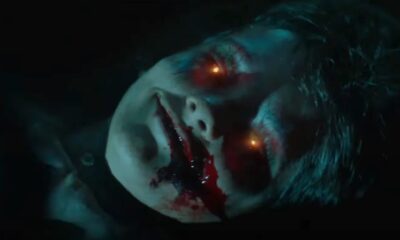
 Movies7 days ago
Movies7 days agoRenny Harlin’s Recent Horror Movie ‘Refuge’ Releasing in U.S. This Month
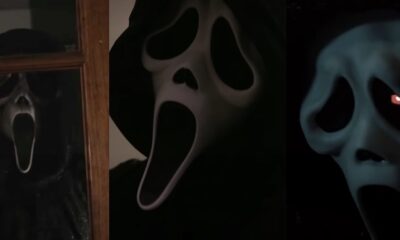























You must be logged in to post a comment Login